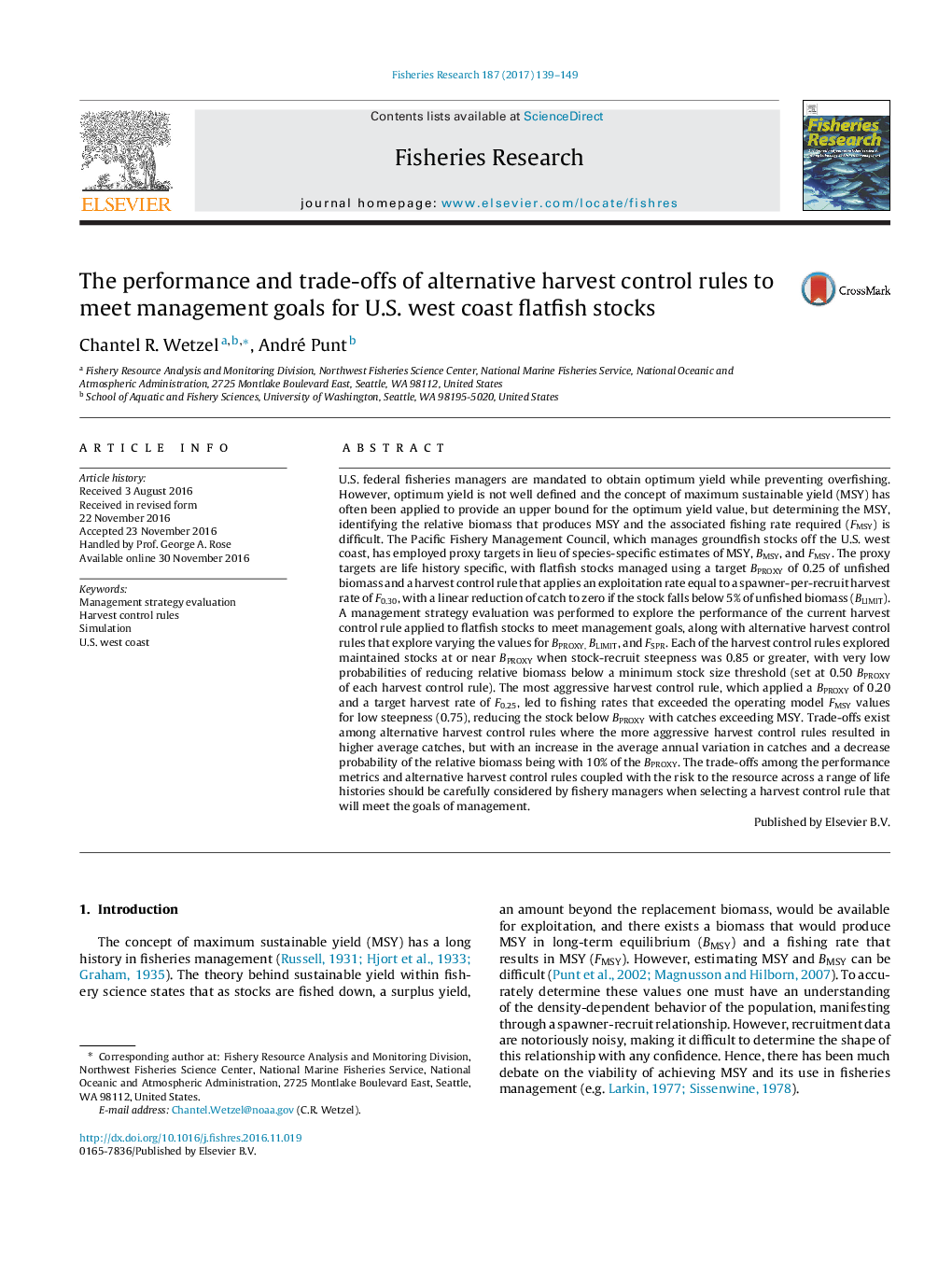| کد مقاله | کد نشریه | سال انتشار | مقاله انگلیسی | نسخه تمام متن |
|---|---|---|---|---|
| 5765652 | 1626783 | 2017 | 11 صفحه PDF | دانلود رایگان |
- The harvest control rules examined performed well maintaining stocks at or near the target biomasses.
- Trade-offs exist between higher catches and annual variation in catch.
- The harvest control rules examined had low probability of stocks falling below the minimum stock size threshold.
U.S. federal fisheries managers are mandated to obtain optimum yield while preventing overfishing. However, optimum yield is not well defined and the concept of maximum sustainable yield (MSY) has often been applied to provide an upper bound for the optimum yield value, but determining the MSY, identifying the relative biomass that produces MSY and the associated fishing rate required (FMSY) is difficult. The Pacific Fishery Management Council, which manages groundfish stocks off the U.S. west coast, has employed proxy targets in lieu of species-specific estimates of MSY, BMSY, and FMSY. The proxy targets are life history specific, with flatfish stocks managed using a target BPROXY of 0.25 of unfished biomass and a harvest control rule that applies an exploitation rate equal to a spawner-per-recruit harvest rate of F0.30, with a linear reduction of catch to zero if the stock falls below 5% of unfished biomass (BLIMIT). A management strategy evaluation was performed to explore the performance of the current harvest control rule applied to flatfish stocks to meet management goals, along with alternative harvest control rules that explore varying the values for BPROXY,BLIMIT, and FSPR. Each of the harvest control rules explored maintained stocks at or near BPROXY when stock-recruit steepness was 0.85 or greater, with very low probabilities of reducing relative biomass below a minimum stock size threshold (set at 0.50 BPROXY of each harvest control rule). The most aggressive harvest control rule, which applied a BPROXY of 0.20 and a target harvest rate of F0.25, led to fishing rates that exceeded the operating model FMSY values for low steepness (0.75), reducing the stock below BPROXY with catches exceeding MSY. Trade-offs exist among alternative harvest control rules where the more aggressive harvest control rules resulted in higher average catches, but with an increase in the average annual variation in catches and a decrease probability of the relative biomass being with 10% of the BPROXY. The trade-offs among the performance metrics and alternative harvest control rules coupled with the risk to the resource across a range of life histories should be carefully considered by fishery managers when selecting a harvest control rule that will meet the goals of management.
Journal: Fisheries Research - Volume 187, March 2017, Pages 139-149
